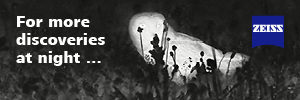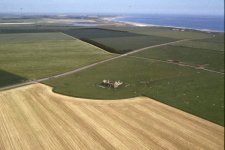
As a wildlife rehabilitator for over 25 years, 99 percent of the injuries I treated were the result of our impact on the environment. Of course, wildlife die from other causes. However, the ones we find are generally injured or killed by collisions with our technologies: automobiles, trains, cars, trucks, planes, windows, power lines, cell phone towers, wind turbines, entangled in barbed and razor wire, poison (pesticides, rodenticides and herbicides) guns, traps and also our pets.
There are new threats to these magnificent birds of prey, wildlife and endangered species that require our knowledge and vigilance. Remember that at one time DDT was an environmental 'hero', but its use led to an environmental nightmare.
Presently, we are in the midst of an energy crisis. Crises often lead to actions we might later regret. Fossil fuels, for example, foster our dependence on foreign oil and are said to be a major contributor to global warming. Unfortunately, we are in danger of exacerbating the problem with the unbridled creation of more industry.
On the surface industrial wind farms such as the Cape Wind project, consisting of 130 440’ wind turbines with a 100’ electrical platform filled with oil slated for the Nantucket Sound, Cape Cod, MA, look good. They use non- polluting wind to generate electricity, and wind, after all, is free. What could possibly be wrong with that? Well, let's just say the devil is always in the details.

In order for wildlife to survive they need places to safely nest, feed and breed. In our modern world there are fewer and fewer of those available due to human encroachment and development (what could be more “developed” in terms of Mother Nature, than a field, a wetland, a mountain, a jungle, an ocean?).
Fortunately, there are people, organizations and government agencies to protect wild places and beings. On the other hand, many of these people, organizations and government agencies are selling out to industry and being compromised. There was a time when no not-for-profit organization would accept money from environmentally harmful businesses. That has changed. Today, many allow themselves to be used by the perpetrators in the quest for funds, power, recognition, credibility and influence. They help the perpetrators 'green-wash' themselves; goodness by association.
We want forms of alternative energy that do not pollute our planet and foster our dependence on foreign oil. But at the same time we want to preserve our wildlife habitats and open spaces. But what choices are we given? The only one readily available is wind power. All of the others are on the back burner waiting for the funding and recognition that the wind lobbyists have usurped.
In order for us to get on the band wagon for this new industry, we are made to feel un-American and un-environmental if we even question it, much less don't buy into it.
But, these whitewashed “green” monsters kill wildlife and wildlife habitat.
Large scale industrial wind farms, like Cape Wind proposed as the largest off shore wind farm in the world, especially when on inappropriate sites, like in the middle of an important migratory flyway, the Nantucket Sound, and endangered species habitat, kill birds especially raptors and bats by the thousands... millions.
Both raptors and bats are extremely focused hunters. They attend completely to the hunt. And that is why they, above all other flying animals, are so badly impacted by wind turbines. They cannot be distracted by ambient sight and noise. They die in the blades because they don't see or hear them even on a clear day or night.

Not only do these industrial wind farms directly kill birds and bats, but they wipe out entire ecosystems on which they depend in order to erect the infrastructure they need. They blast the tops off of mountains, plow roads through dwindling wildlife habitat, dredge the life out of our seas, wipe out forests and kill what is left of our prairies.

Please, don't be fooled by infomercials of a growing industry. Look into what is being glossed over, dismissed and hidden and then decide.
For more information please visit web sites: National Wind Watch, Industrial Wind Action Group, Country Guardian, AMERICAN BIRD CONSERVANCY WIND ENERGY POLICY, Royal Society for the Protection of Birds, BirdLife International report on windfarms and birds, New Jersey Audubon position paper on wind power energy and Bat Conservation International
Photos by Dona Tracy
Last edited:





